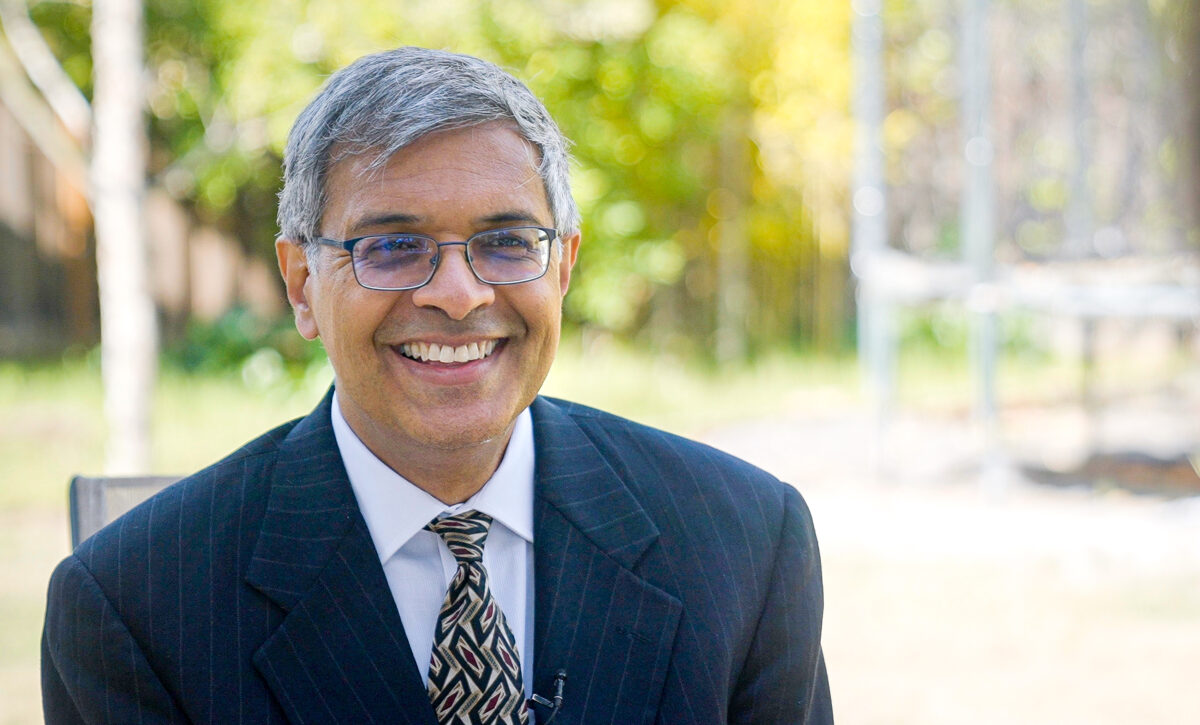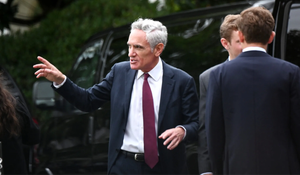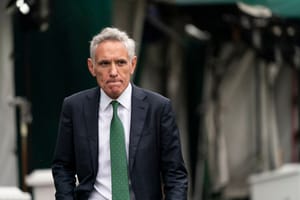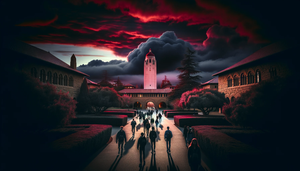Stanford Review: Thank you so much for speaking with us, Professor Bhattacharya. We understand that you experienced a kind of censorship at Stanford during the COVID-19 pandemic when you challenged the medical community’s prevailing wisdom. Can you tell us what happened?
Jay Bhattacharya: Of course. It’s March of 2020, and Stanford shuts down. I wrote an op-ed in the Wall Street Journal arguing that we didn't know how many people had COVID, and we didn't know what the death rate was. The reason was that, at the time, there was limited testing and they were identifying a lot of people with COVID who were very sick. But we weren't testing broadly in the entire population; we were just testing people who showed up in the hospital, for instance. And so the set of people that were identified as COVID-positive were very sick, and they were reporting very high death rates.
It was quite possible that there were a lot of people who already had COVID in the community that weren't very sick. So I co-authored a study that measured how many people in the population at large had antibodies in Santa Clara County and in LA County.
The results were really surprising: 50 times more people had been infected than had been identified as cases in Santa Clara County, and there were 40 times more infections than recorded cases in LA County. The disease then was already everywhere, right? It wasn't possible to stop it.
These results meant that the lockdowns we were doing were not going to work. The disease had been spreading. But the death rate implied by our study was something like 0.2 percent, whereas the World Health Organization was telling people that the death rate was 3.5 percent.
Stanford Review: Did you receive pushback from these results?
Jay Bhattacharya: I presented the results in a seminar in the medical school, and I was viciously attacked. Even though everyone thought that the decline in the number of cases was due to the lockdowns. If you look at other countries that didn't lock down, however, they had a very similar epidemic curve. That result, I thought, was quite an important one, but it led to a number of hit pieces against me and my family.
It was really nasty: allegations of research misconduct, undeclared conflicts of interest… In reality, the whole study was funded by small-dollar donations. The biggest donation was from the founder of JetBlue, who gave $5,000. Those allegations led Stanford to conduct an investigation of me and other people who ran the study for several months. They eventually found nothing wrong.
At the time, the idea was that, in public health, if you told people that the death rate was 0.2 percent, maybe they wouldn't comply with the rules. For young people, the risk of dying from COVID was vanishingly small, and people in public health were very afraid that if you told young people this fact, they wouldn't comply with the lockdown orders.
Stanford Review: It sounds like your research really outraged the medical community. Why do you think that was the case?
Jay Bhattacharya: I think there are several things, but one is the idea of the lockdowns as the way that we protect people. A lot of people in the medical school firmly believed that. So they claimed that anyone that was arguing against them was endangering lives, and that falsehood just makes the scandal even worse.
Stanford Review: What was the Stanford investigation into your research like for you?
Jay Bhattacharya: It was very stressful. I had to hire lawyers. I've been at Stanford for 38 years and I felt it was really, really out of character. At one point, the Chair of Medicine ordered me to stop going on media and to stop giving interviews about COVID policy. They were trying to totally silence me.
I'd been on a television show where I argued that contact tracing was very unlikely to help because the disease had already spread pretty widely, and they said that appearance endangered public health, although now it's widely acknowledged that contact tracing did basically nothing. It’s not okay for the University to tell a professor that they can or cannot speak. That's just a straight-up violation of academic freedom.
For academic freedom at Stanford in particular, it sent a really clear signal, right? “If you disagree with the lockdowns and school closures, you are an anathema.” For all of us that were doing that, it felt like Stanford had created a hostile work environment. The University’s actions made it very difficult for people to speak up.
I'm a health policy person. I do health policy for a living, and this was the most important health policy issue of my lifetime. How could I stop? How could I stay silent? A lot of junior professors reached out to me and said that they were glad I was speaking up, because they couldn't, because they were afraid to lose their tenure.
Stanford Review: Do you think anything has changed since the pandemic?
Jay Bhattacharya: I think the new leadership has tried to move things in a more positive direction, but to the previous leadership, the idea of academic freedom was essentially an afterthought. It's partly a leadership problem, but primarily it is a cultural problem. The University has many professors that are very intolerant of ideas they disagree with, especially when they have any political implications at all. Stanford’s professoriate is largely Democrat-voting, and there's nothing in principle wrong with that, as long as it’s laid on top of a fundamental tolerance for people of different political stripes.
Stanford Review: What do you think would be a possible solution to this lack of academic freedom?
Jay Bhattacharya: I think having a leadership that fundamentally views academic freedom as central to the mission of the University is really important. We’re not trained on what tolerance for ideas we disagree with looks like. That is so fundamental to the University, and it seems to me that if we're going to train faculty on all these other things, we may as well train them on that thing which is fundamental.
For administrators or faculty that violate those norms, there should be consequences—just like there are consequences for creating hostile work environments on other grounds. If you create a hostile work environment as far as academic freedom is concerned, there ought to be consequences.
Stanford Review: Besides leadership, are there any other policy changes Stanford can make to change its academic culture?
Jay Bhattacharya: The culture of a university is subtle. There are some policy things that can be done, but the faculty needs to start speaking out even if it costs them. A lot of professors feel bullied by a relatively small number of loud, powerful faculty members that push the sense that if you speak against what they think, you are somehow evil and should be excised from the University.
The University itself needs to lean into the policy debates that inflame people’s emotions. They should hold policy debates with both sides represented. They should allow both sides to speak and be heard respectfully. They should tell those forces that want to shut down debate that they are not allowed to do that.
I do think Stanford is worth fighting for. Stanford is a special place. It has an enormous amount of cultural cachet. I very firmly believe in its missions of research and teaching. The problem is that a university that doesn't have academic freedom cannot fulfill either of those missions.
Stanford Review: Thank you so much, Professor Bhattacharya, for speaking with us today.
This interview has been lightly edited for length and clarity.







